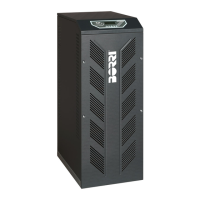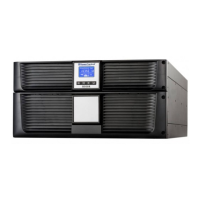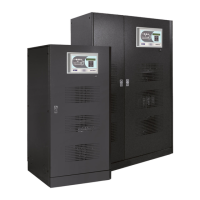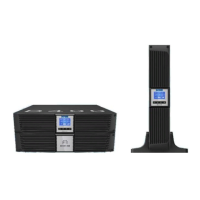08
2.2 SYSTEM DESCRIPTION
2.2.1 Rectifier
It converts the three phase voltage of the mains into continuous DC voltage.
It uses a three phase - low harmonics - fully-controlled IGBT’s bridge.
It’s designed to supply the inverter at full load and the battery at the maximum
recharging current. This configuration is used to reduce the distortion of the current
absorbed from the mains (THD) to a value <5%.
This ensures that the rectifier does not distort the supply mains, with regard to the
other loads; it also avoids the overheating of the cables due to the harmonics
circulation.
2.2.2 Inverter
It converts the continuous voltage coming from the rectifier or from the battery into
alternating voltage stabilized in amplitude and frequency.
The inverter uses IGBT technology with a frequency commutation of approximately
15 KHz.
The control electronics is completely digital and uses a 32 Bit μP, that, by the means
of its processing capability, generates an excellent output sine-wave, which has a very
low distortion even in presence of loads having high crest factor currents.
2.2.3 Battery and battery charger
The battery is housed inside the UPS (only for B8000 10-15-20kVA) and in an
external battery cabinet for higher battery ratings.
The battery charger control logic is completely integrated inside the rectifier control
board; the battery is charged, according to the DIN 41773 Standard, every time it has
been partially or completely discharged and it is kept floating, even when it’s charged, to
compensate for any autodischarge.
2.2.4 Static bypass
It’s designed to transfer the load between INVERTER and MAINS, and vice-versa,
without break, and uses SCR’s as power commutation elements.
2.2.5 Manual bypass
It‘s used to by-pass the UPS, supplying the load directly to the mains in case of
maintenance or serious failure.
WARNING
The sequence of bypass switching must be carried out with respect to the procedure
indicated on the UPS and in the chapter “Start-up, shut-down and manual bypass”. The
manufacturer cannot accept responsibility for damages arising from incorrect operation.
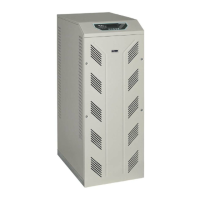
